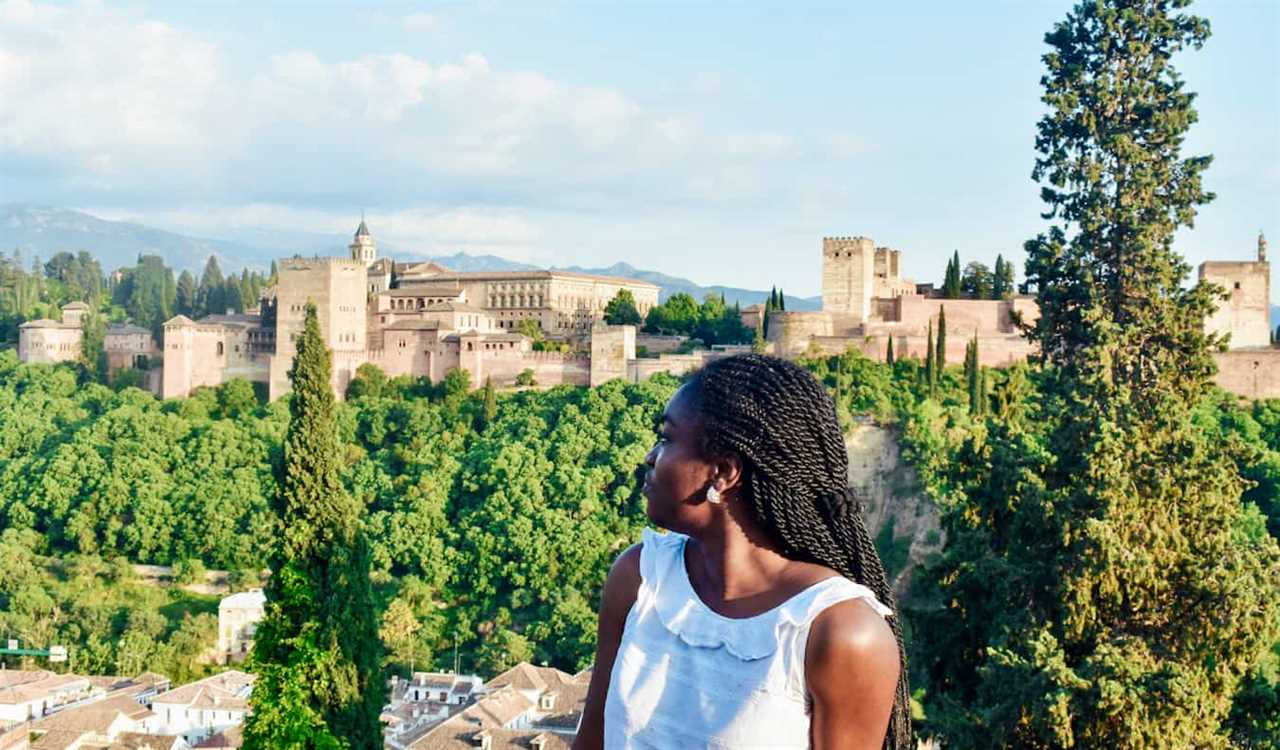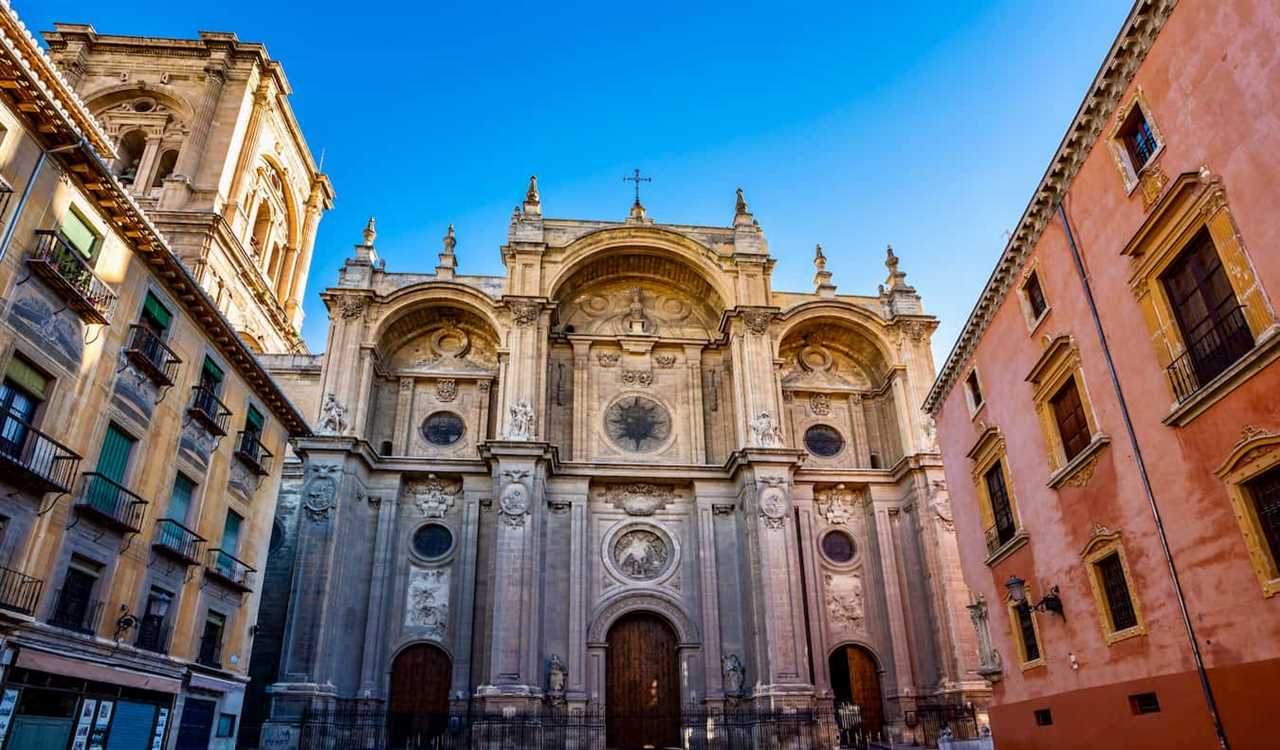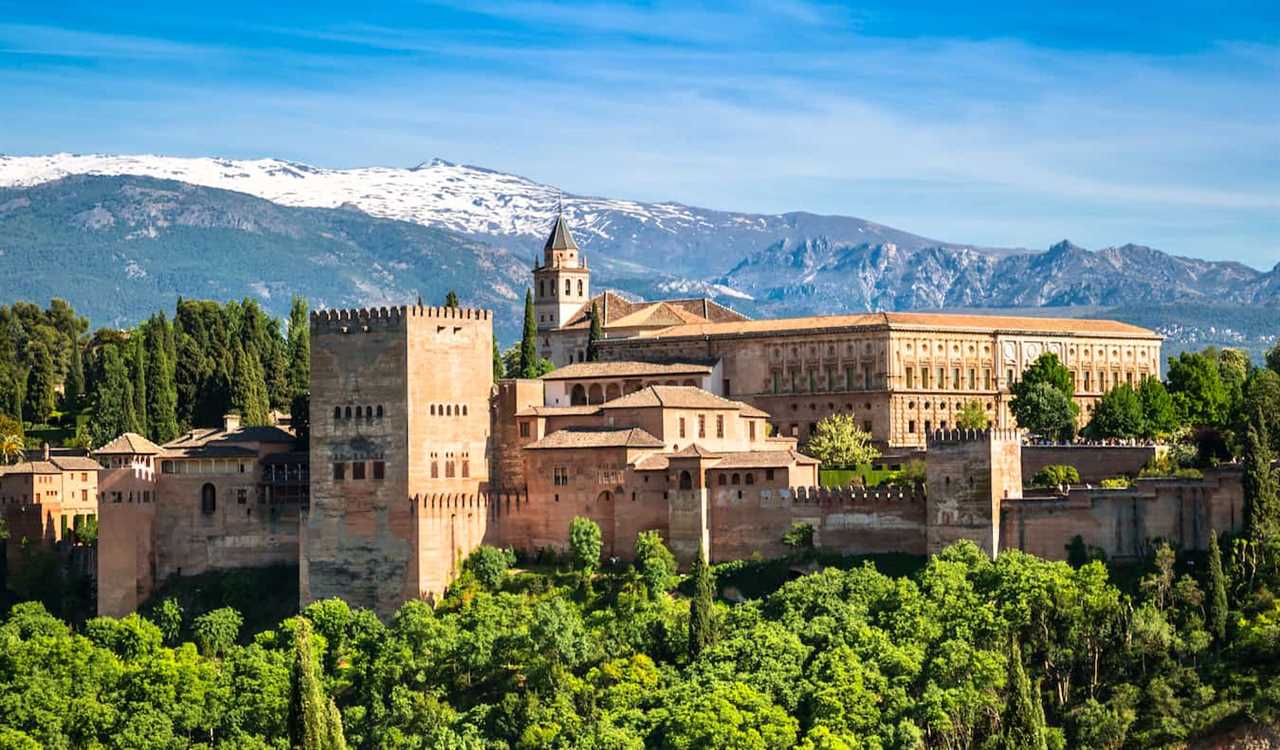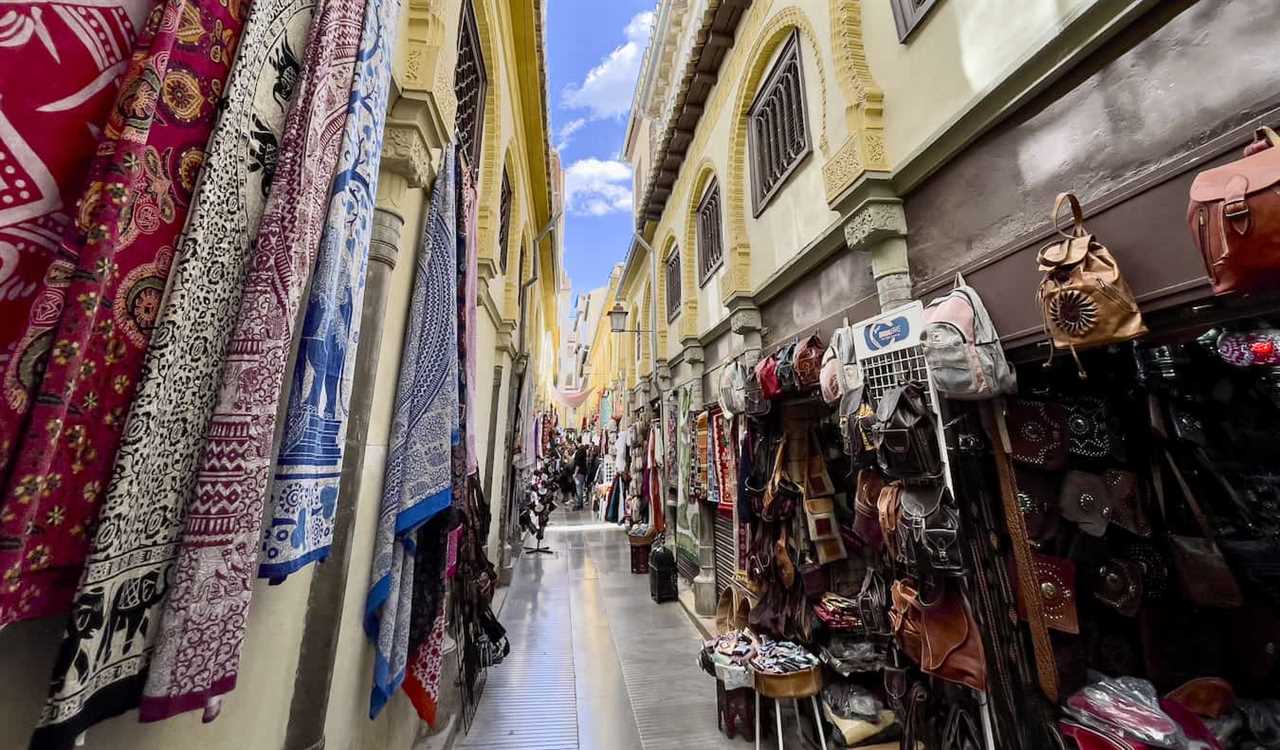
Posted: 4/13/2023 | April 13th, 2023
In this guest post, travel expert Somto from Somto Seeks shares her suggested itinerary for Granada, one of Spain’s most beautiful and enchanting cities.
When you think of Granada, Spain chances are that one attraction comes to mind: La Alhambra. But this sprawling 14th-century palace — one of the finest examples of Moorish architecture — only scratches the surface of what Granada has to offer.
A melting pot of the Muslim, Jewish, and Christian cultures that have built modern Spain, this city often feels like Morocco in some parts — until you run into a grand cathedral.
One thing that is consistent, however, is its soulful, romantic aura that seems to permeate everything, from the street markets to the tapas bars.
I’ve visited Granada twice, spending almost a month during my second stay. Each time, I visited La Alhambra but also discovered new parts of town, falling more in love with the flamenco culture and the narrow streets.
While it is a smaller, quieter city, with a slower pace of life than the bustling metropolises of Madrid and Barcelona, there are distinct neighborhoods and unique attractions that will take up plenty of your time. I could easily have spent another month exploring them!
But just three days of meandering through the Arab Quarter, watching spontaneous flamenco street performances, and gorging on free tapas will leave you with no doubt that Granada might just be the top destination in Spain.
Use this itinerary as a starting point to put together one that fits you and your interests.
Day 1: The Arab Quarter and Historic Center

Start off your adventure in Granada with a tour of the historic center, where a handful of the city’s most iconic monuments, plazas, and streets are located. It’s a wide area encompassing the Arab Quarter, also known as the Albaicín, and some prominent public institutions and plazas. Here are some of my favorite things to do:
Visit Corral del Carbón
This 14th-century building is the only preserved alhóndiga, or corn exchange, on the Iberian Peninsula from the period of Muslim rule. It functioned as a marketplace for goods like wheat, a storehouse, and lodging for merchants coming from outside of town. Due to its historical importance, Corral del Carbón was declared a National Monument by the city of Granada. You can visit on a guided tour.
Walk the Streets of the Alcaicería
Walking around the Alcaicería feels like you’ve been transported to Morocco. Decorated with lamps and dating back to the 15th century, it’s a narrow market street in the heart of Granada whose shops are filled with everything from ceramics to leather goods. The merchants who stayed at Corral del Carbón back in the day came here to sell their goods. Today, you can find some unique souvenirs here and bargain with the sellers to get the best price.
Admire the architecture at the Granada Cathedral
The Granada Cathedral is a Renaissance- and Baroque-style church that was built in the 16th century on the site of the Great Mosque after the reconquest of Spain by the Catholic Kings. What really makes this church special is the ornately decorated, gold-lined altar — it’s a sight to behold.
Relax at Plaza Bib-Rambla
After walking around the historic center for a few hours, make a stop at the Plaza Bib-Rambla, arguably the most beautiful square in town. This is a great spot to sit, have a cup of coffee, and take in the atmosphere. There is a massive fountain in the center called The Mountain of the Giants, surrounded by various shops and cafés.
Indulge in free tapas and Andalusian cuisine
Tapas (akin to appetizers or snacks) originated in Andalusia, the province where Granada is located. As such, the tapas culture is alive and well here. Traditionally, restaurants and bars serve tapas as an appetizer, and they are normally free. You will likely find these at a hole-in-the-wall restaurant or neighborhood bar, the way it was always meant to be. But if you want to sample a variety, you can also go on a guided tapas tour.
Beyond tapas, there are several famous dishes from Andalusia that are worth trying. Native to Granada is the Sacromonte omelette, made with lamb or calf brains and testicles — suitable for adventurous eaters. A dish that anyone can try would be plato alpujarreño, a traditional plate consisting of jamón serrano (cured ham), morcilla (blood sausage), potatoes, eggs, and peppers.
Lastly, we have the traditional Andalusian gazpacho, a cold tomato soup. I will admit that I’m not a fan of cold soup, but I can see how gazpacho would be refreshing on a hot summer day.
Day 2: La Alhambra, Generalife, and Sacromonte

Take a guided tour of La Alhambra
La Alhambra is the symbol of Granada. The name translates to “red fort” in Arabic, a reference to the reddish tones of the edifices.
The Emir of Granada commissioned the construction of this sprawling palace and fortress in the mid-13th century to serve as the residence for the Moorish Nasrid kings and their families. About 120 years later, La Alhambra was completed.
Perched on Sabika Hill overlooking the Sierra Nevada Mountains and the city, La Alhambra is the best-preserved remnant of the period of Islamic rule on the Iberian Peninsula. As such, it has been designated a UNESCO World Heritage Site. Here are the main parts of the palace to see during your tour:
- The Nasrid Palaces – It’s hard to describe the breathtaking craftsmanship of Moorish architecture, and the Nasrid Palaces, which served as official residences for Moorish rulers, are one of the finest examples of it. With their colorful tiles, stucco walls, and intricately carved designs, the Comares Palace, the Palace of the Lions, and the Mexuar are amazing. They are linked through a series of courtyards and walkways, which also include a fountain, a reflecting pool, and marble walls. Take your time to stroll through the palaces, located in the middle of the Alhambra complex, and marvel at the beauty of the surroundings.
- The Medina – Located in the eastern part of La Alhambra, the Medina was a citadel during the Nasrid dynasty. It was home to a residential area for palace servants and common people, in addition to mosques, shops, and public houses. Today, you’ll find mainly ruins of some of the original structures, since, during the reconquest of Spain, much of the citadel was destroyed and replaced with new buildings. Still, exploring this area will give you a sense of how normal people lived during the Moorish era in Granada.
- The Alcazaba – This military base and fortress on the western tip of La Alhambra is the oldest part of the La Alhambra complex. It housed guards and their families, as well as nobility during the Nasrid period. With its multiple towers and steep walls, the main function of the Alcazaba was to protect the palace from attacks and foreign invaders. This area also offers a spectacular view of the Sierra Madre Mountains.
Skip-the-line tickets to La Alhambra are 23 EUR and includes the Nasrid Palaces.
Smell the roses at the Generalife
While the Generalife is a part of the La Alhambra complex, this oasis deserves a separate tour of its own. It’s a group of sprawling gardens located on the eastern side, right next to the entrance, where you can sit in the garden and take a breather.
Home to over 300 types of flowers, the gardens were built as a summer escape for the Moorish kings, who would likewise retreat here when they needed to get away from the palaces and get some fresh air.
The word generalife is derived from an Arabic phrase that means “garden of the artist.” It’s a fitting name for this peaceful and colorful environment. The main attraction is a central patio with a long pond and lush greenery all around.
You can book a guided tour of La Alhambra and the Generalife Gardens if you want to see both of them at once. These typically last around three hours.
Take in the views at Mirador de San Nicolás
Just a 20-minute walk from La Alhambra, you’ll find the most famous viewpoint in all of Granada: Mirador de San Nicolás, a hilltop overlook that encompasses La Alhambra and the Sierra Nevada Mountains. It’s a popular gathering spot for artists, with singers and flamenco dancers often performing here for the public.
You can grab a drink at one of the bars in the vicinity, sit for a moment, and just enjoy the scenery. Also be sure to capture a few photos with a perfect view of La Alhambra and the entire city of Granada in the background.
Watch a flamenco show in the caves of Sacromonte
You cannot visit Granada without going to a flamenco show. This style of dance was invented by the gitanos, or Roma people, of Andalusia, who mixed Arab rhythms with Spanish folklore and Moorish musical traditions to create a new art form. Flamenco dates back two hundred years and was initially just a regional dance. Nowadays, it’s the most recognizable dance form from Spain.
In Granada, there is no better place to experience flamenco than the Sacromonte neighborhood, an area long inhabited by the Roma population and among the top three places in Spain to see a performance. They live and breathe the art of flamenco, as it is such an important part of their culture and heritage. That’s why you will see the most spirited and traditional performances of this art form in the caves of Sacromonte, tucked away from the rest of the city.
I vividly remember my first time seeing flamenco in one of the caves of Sacromonte more than 10 years ago, in a tiny room that could fit maybe 20 people. As the dancers took to the stage, throwing their arms up in the air, chanting and clapping, I was in awe. The intensity, the fervor, the lively atmosphere — it was all so exhilarating.
Day 3: The Old Jewish Quarter and Hamman Al Andalus

The Old Jewish Quarter of Granada, known locally as Barrio Realejo, is a distinctive neighborhood that’s known for its steep streets, whitewashed buildings, and hole-in-the-wall tapas bars. This district has historically been critical to the cultural fabric of Granada. It was destroyed during the reconquest of Spain when the Sephardic Jews who lived there were expelled from the country. Today, it is a multicultural quarter with street art and a whole lot of personality.
Here are a few activities to make the most of your visit:
- Make a wish at Plaza del Campo del Príncipe – The leafy square at the heart of the neighborhood is widely regarded as the best place in town for tapas. There are outdoor terraces where one can sit and relax over food and drinks. In the middle of the square is a statue called Cristo de los Favores, where you can make three wishes on Good Friday.
- Admire the murals at Colegio Santo Domingo – The Jewish Quarter has long been known for its art scene. This school has some of the most awe-inspiring murals in the city, a hodgepodge of cartoons, angels, and symbols. It’s the work of famed artist Raúl Ruiz, who has created a series of paintings all around Granada.
- Take a stroll down Paseo de Los Tristes – This long promenade that runs along the Douro River used to be a popular route for funeral processions, hence the name, meaning “walk of the sad ones.” Today, this route is anything but sad, with beautiful views of La Alhambra above. It makes for a nice stroll in the evening.
- Explore the Sephardic Museum – While much of the old Jewish Quarter was destroyed during the reconquest of Spain, the history of that era is preserved in this small museum. Tucked away in an alley, it houses artifacts and exhibits that showcase Jewish life, culture, and traditions during the Moorish era. Admission is 5 EUR.
Relax at Hammam Al Andalus
Wrap up your adventure in Granada with a soothing bath at the Hammam Al Andalus. This is a modern hammam (Turkish bath) built in the same style as the 13th-century bathhouses that the Moors introduced to Granada. In fact, this place was built in the same location as one of the original ones.
Relax and unwind in one of the four pools of different temperatures. You can also choose from a selection of essential oils to make the experience even more soothing. Admission with a massage starts at 59 EUR.
***
Granada is a truly magical place with a fascinating history, a rich culture, and unrivaled beauty. Whether you’re a history buff, a foodie, or an adventure traveler, you will find something here that suits you. Take your time to immerse yourself in the culture, taste the cuisine, and soak in the history.
This itinerary should give you an overview of the sites, food, and experiences awaiting you in Granada. Remember that it’s your trip, so feel free to mix it up. If a particular attraction doesn’t appeal to you, you can skip it. Or likely you’ll stumble upon a place that isn’t on this list.
Get Your In-Depth Budget Guide to Europe!
My detailed 200+ page guidebook is made for budget travelers like you! It cuts out the fluff found in other guides and gets straight to the practical information you need to travel while in Europe. It has suggested itineraries, budgets, ways to save money, on and off the beaten path things to see and do, non-touristy restaurants, markets, bars, safety tips, and much more! Click here to learn more and get your copy today.
Book Your Trip to Spain: Logistical Tips and Tricks
Book Your Flight
Use Skyscanner to find a cheap flight. They are my favorite search engine because they search websites and airlines around the globe so you always know no stone is left unturned.
Book Your Accommodation
You can book your hostel with Hostelworld as they have the biggest inventory and best deals. If you want to stay somewhere other than a hostel, use Booking.com as they consistently return the cheapest rates for guesthouses and cheap hotels.
Don’t Forget Travel Insurance
Travel insurance protects you against illness, injury, theft, and cancellations. It’s comprehensive protection in case anything goes wrong. I never go on a trip without it as I’ve had to use it many times in the past. My favorite companies that offer the best service and value are:
- SafetyWing (best for everyone)
- Insure My Trip (for those over 70)
- Medjet (for additional evacuation coverage)
Looking for the Best Companies to Save Money With?
Check out my resource page for the best companies to use when you travel. I list all the ones I use to save money when I’m on the road. They save you money when you travel too.
Want More Information on Granada?
Be sure to visit our robust destination guide on Madrid for even more planning tips!
The post The Perfect 3 Day Granada Itinerary appeared first on Nomadic Matt's Travel Site.
-------------------------
By: NomadicMatt
Title: The Perfect 3 Day Granada Itinerary
Sourced From: www.nomadicmatt.com/travel-blogs/grenada-itinerary/
Published Date: Thu, 13 Apr 2023 12:00:32 +0000
Read More
 General Health and WellnessFitness and ExerciseSupplements and VitaminsPandemic NewsVideosPrivacy PolicyTerms And Conditions
General Health and WellnessFitness and ExerciseSupplements and VitaminsPandemic NewsVideosPrivacy PolicyTerms And Conditions
